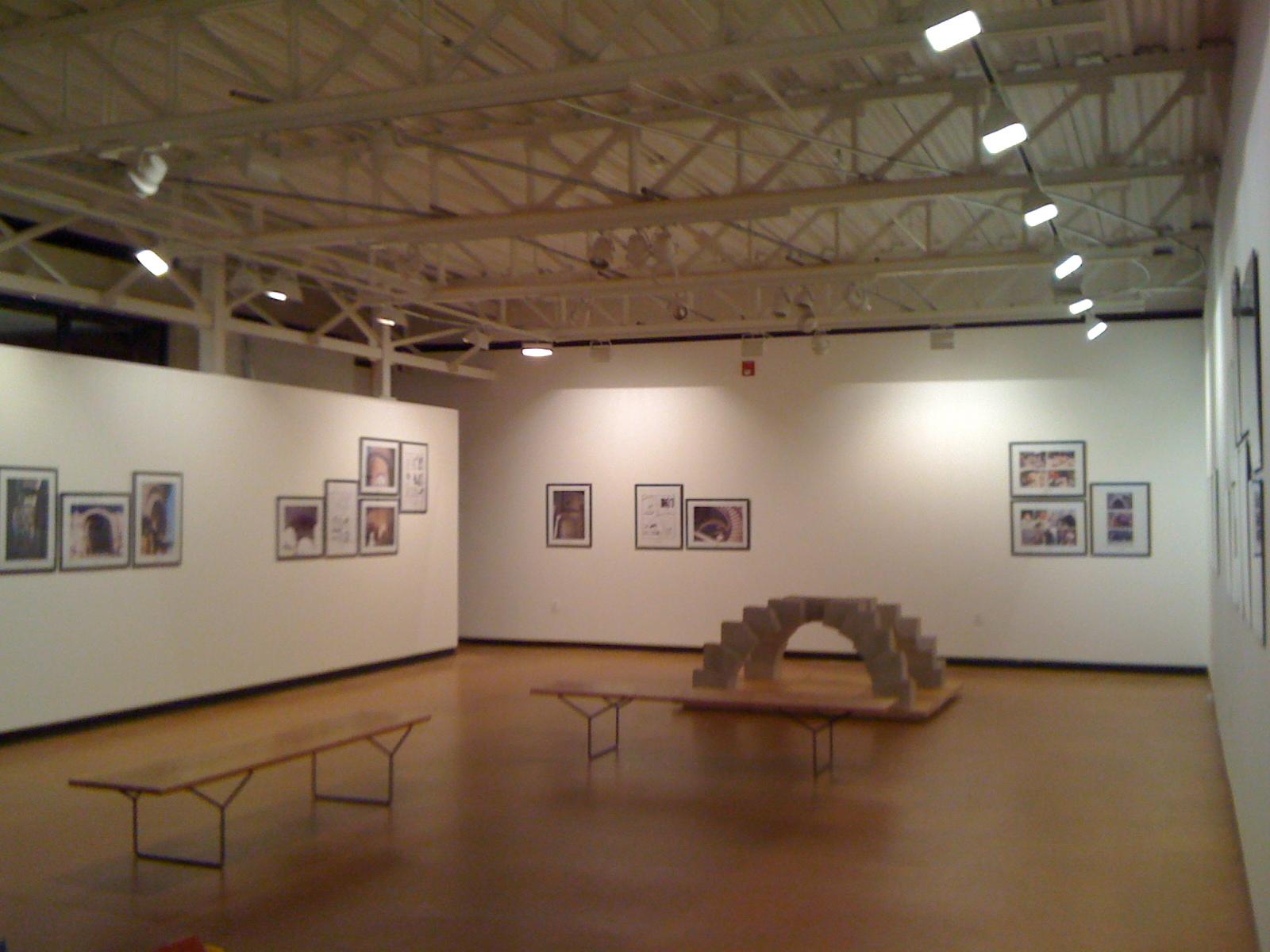3835 Campus Drive
Architecture Building (145 ARC)
College Park, MD 20742
United States
This exhibition brings together for the first time curator Mark Schneider's wealth of research and documentation of the historic tradition of stereotomy—the nearly lost art of stonecutting that relies on mathematical precision and meticulous craftsmanship to create elegant stone vaults.
Schneider, an architectural historian at Virginia Tech's School of Architecture and Design, kicked off the exhibition with a gallery talk, held in conjunction with the [re]PRESENTATION symposium.
The Renaissance and Baroque stereotomy upon which this exhibit concentrates was largely a Spanish and French development from stonecutting techniques of very ancient and perhaps Middle Eastern origin. To be sure, techniques of stereotomy were known and used in other countries such as Italy and Germany during the Renaissance and before.
At least since the Renaissance it has been customary for masons to cut voussoirs, the individual stones comprising a dome, arch or vault, in one of two ways. One could either work with the aid of templates representing the true shape and size of each face of the stone to be cut, or with a bevel square and information about the angles and dimensions of each face of the stone recorded on a sheet of paper. In either case, stereotomy involved making drawings to obtain the required dimensions before the stones were actually cut so they could serve as guides in the cutting process.
The objective was for each stone to fit perfectly when the vault was assembled, without the need for further cutting. The geometrical difficulties involved in this process can be envisioned by imagining a single voussoir as a polyhedral box in which the true shapes of the various faces might be triangles, parallelograms or trapezoids. The basic task of stereotomy amounted to using special geometrical projection techniques to graphically unfold the sides of this box so that all of the faces of the polyhedron appeared in true size and shape within a single plane corresponding to that of the drawing one was making.
In the play of life there are those rare but wonderful moments when you may step out of character—out of the classic, orthogonal order of everyday rectitude into another, almost surreal world of exquisite depravity. For those who are able to see it, there is, inscribed within the orthodox, another system of obliquity where stairways sometimes seem to float in the air. It is even this very contamination that makes the orthodox possible as an orthodoxy. Stereotomy sometimes walks a tightrope between these two conditions—between prudence and virtuosity, between purity and contamination.
Exhibition Credits
Curated by Mark Schneider. This exhibition was made possible by: Ronit Eisenbach, Kibel Gallery Chair, and Hooman Koliji, Associate Professor of Architecture; Mercedes Afshar, Exhibition Designer and Kibel Gallery Assistant; Thomas Swift, Shop Supervisor; Parlin Meyer, Jeff Gipson, Stanley Mathurin and Kevin Vandeman, Shop Assistants.




